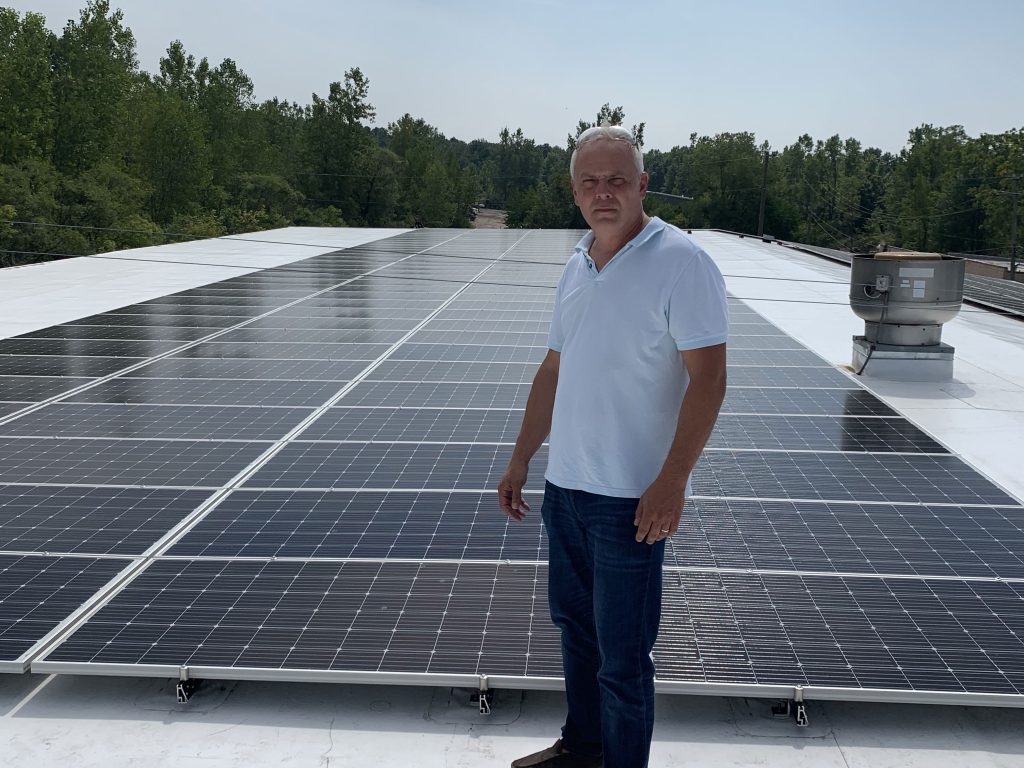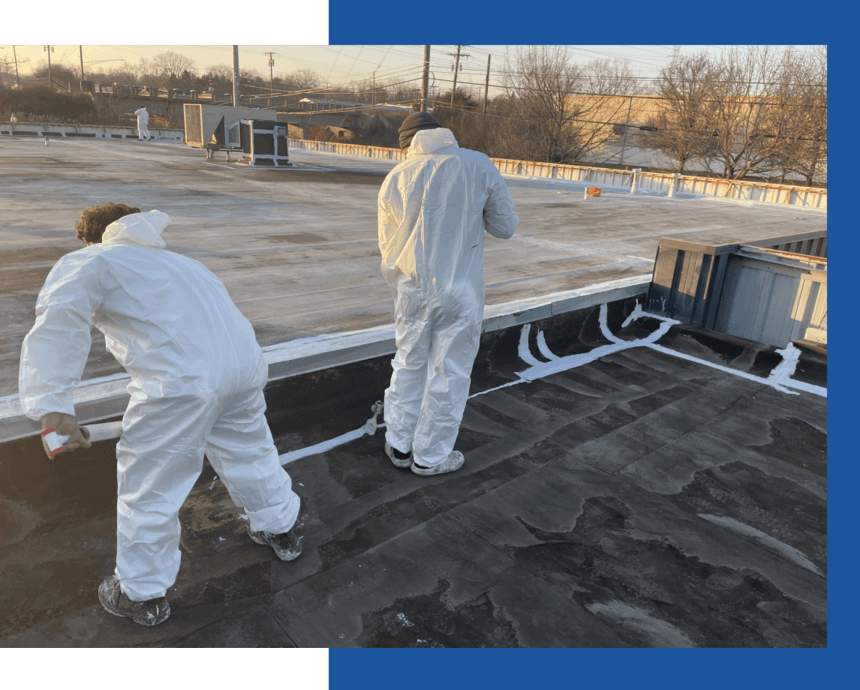Commercial Roof Inspection Checklist

A commercial roof is one of the most important assets of any building. It protects the building from the elements, provides insulation, and enhances the appearance of the property. However, a commercial roof also faces various challenges, such as weathering, aging, damage, and wear. To ensure that your commercial roof remains in good condition and performs well, you need to conduct regular inspections and maintenance.
In this article, we will provide you with a comprehensive checklist for conducting a commercial roof inspection. This checklist will help you assess the current state of your roof, identify any issues or potential problems, and take appropriate actions to address them. By following this checklist, you can extend the lifespan of your roof, prevent costly repairs, and maintain the integrity of your building.
Pre-Inspection Preparation
Before you start the inspection, you need to prepare yourself and your tools for a safe and thorough assessment. Some of the steps that you should take are:
- Review the history of your roof, such as previous inspections, repairs, warranties, or guarantees.
- Check the weather forecast and choose a day with clear skies and moderate temperatures.
- Wear appropriate clothing and protective gear, such as gloves, boots, goggles, and helmet.
- Gather necessary tools and equipment, such as a ladder, flashlight, camera, tape measure, binoculars, and a clipboard or notebook.
- Inform the building occupants and staff about your inspection and ask them to report any issues or concerns that they may have noticed.
Exterior Assessment
The first part of the inspection involves examining the exterior of your roof from different angles and distances. You should look for any visible signs of damage or wear that may affect the performance or appearance of your roof. Some of the things that you should check are:
- The overall condition of your roof, looking for any cracks, holes, tears, or punctures.
- The presence of debris accumulation, such as leaves, branches, dirt, or trash.
- The growth of algae or moss on your roof surface or edges.
- The alignment and stability of your roof structure and components.
Roofing Materials Evaluation
The next part of the inspection involves evaluating the roofing materials that cover your roof surface. Depending on the type of your roof (flat or sloped) and the materials used (shingles, membranes, metal panels, etc.), you should look for different signs of deterioration or damage. Some of the things that you should check are:
- The condition of roofing materials (shingles, membranes, etc.), looking for any cracking, blistering, curling, or peeling.
- The presence of loose or missing shingles or tiles that may expose your roof deck or create leaks.
- The color and texture of roofing materials, looking for any fading, discoloration, or staining.
Flashing and Sealing Inspection
The next part of the inspection involves inspecting the flashing and sealing around various features on your roof. Flashing is a thin metal strip that covers the joints and edges of your roof to prevent water infiltration. Sealing is a material (such as caulk) that fills the gaps and cracks between roofing materials to create a watertight seal. Some of the things that you should check are:
- The condition of flashing around vents, chimneys, skylights, and other protrusions on your roof.
- The presence of deterioration or detachment of flashing that may create gaps or leaks.
- The condition of seals and caulking around roofing materials and features.
- The presence of wear or gaps in seals and caulking that may allow water or air to enter or escape.
Gutters and Drainage Assessment
The next part of the inspection involves assessing the gutters or drainage system on your roof. Gutters are channels that collect rainwater from your roof surface and direct it to downspouts that carry it away from your building. Drainage is a system that allows water to flow freely from your roof to prevent ponding or flooding. Some of the things that you should check are:
- The condition of gutters and downspouts on your roof.
- The presence of clogs, damage, or improper drainage in gutters and downspouts that may cause water overflow or backup.
- The direction and flow of water from your roof to ensure that it is directed away from your building foundation and walls.
Roof Penetrations and Protrusions
The next part of the inspection involves inspecting any penetrations and protrusions on your roof. Penetrations are openings on your roof that allow pipes, wires, ducts, or other equipment to pass through. Protrusions are features on your roof that stick out above the surface level, such as HVAC units, vents, fans, skylights, etc. Some of the things that you should check are:
- The condition and installation of any rooftop equipment on your roof.
- The presence of secure attachment and proper support for rooftop equipment to prevent movement or damage.
- The condition and installation of penetrations on your roof.
- The presence of proper flashing and sealing around penetrations to prevent leaks or corrosion.
Interior Inspection
The next part of the inspection involves assessing the interior of your building for any signs of roof leaks or moisture-related issues. You should inspect the ceiling, walls, and floors of your building, especially in areas that are directly below or adjacent to your roof. Some of the things that you should check are:
- The condition and appearance of the interior surfaces, looking for any cracks, stains, or discoloration.
- The presence of leaks, water stains, or moisture-related issues on the ceiling, walls, or floors.
- The condition and installation of insulation and ventilation in the attic or roof space.
- The presence of mold growth, wood rot, or rust in the attic or roof space.
Structural Evaluation
The next part of the inspection involves examining the structural integrity of the roof deck and its support system. The roof deck is the layer of material that forms the base of your roof. It is usually made of wood, metal, concrete, or gypsum. The support system is the framework that holds up your roof deck and transfers its weight to the building walls and foundation. It is usually made of beams, trusses, joists, or rafters. Some of the things that you should check are:
- The condition and strength of the roof deck, looking for any signs of rot, deterioration, or damage.
- The presence of proper support and reinforcement for the roof deck to prevent sagging or collapse.
- The condition and alignment of the support system, looking for any signs of bending, cracking, or warping.
- The presence of proper support and clearance for heavy equipment and foot traffic on the roof.
Skylights and Windows
The next part of the inspection involves checking the skylights and windows on your roof. Skylights are openings on your roof that allow natural light to enter your building. Windows are openings on your walls that allow natural light and ventilation to enter your building. Some of the things that you should check are:
- The condition and installation of skylights and windows on your roof or walls.
- The presence of cracks, leaks, or improper seals on skylights and windows that may cause water infiltration or heat loss.
- The condition and installation of frames and glazing on skylights and windows.
- The presence of secure and watertight frames and glazing on skylights and windows.
Roof Access and Safety Measures
The next part of the inspection involves evaluating the access points and safety measures on your roof. Access points are locations where you can enter or exit your roof safely and easily. Safety measures are devices or procedures that protect you from falling or injuring yourself while working on your roof. Some of the things that you should check are:
- The condition and installation of access points on your roof, such as ladders, hatches, doors, or stairs.
- The presence of compliance with regulations regarding access points on your roof.
- The condition and installation of safety measures on your roof, such as railings, barriers, harnesses, or signage.
- The presence of compliance with regulations regarding safety measures on your roof.
Documentation and Reporting
The next part of the inspection involves documenting and reporting your findings during the inspection. Documentation is the process of recording all the information that you have gathered during the inspection in a clear and organized manner. Reporting is the process of creating a detailed report that summarizes your findings and can help facilitate the estimation process with a commercial roofing contractor. Some of the things that you should do are:
- Document all the information that you have collected during the inspection using a camera, a tape measure, a clipboard or notebook, or a digital device.
- Record all the details such as date, time, location, weather conditions, inspector name, building owner name, etc.
- Note down all the observations such as issues found, potential problems identified, areas inspected, etc.
- Use a rating system such as good-fair-poor to evaluate each component or area of your roof.
- Create a detailed report that summarizes all your findings using a clear and concise language.
- Include all relevant information such as documentation details, inspection results, ratings given etc.
- Keep a list to give to potential roofing contractors to keep yourself armed with knowledge during the estimating process
Frequency of Inspections
The last part of the inspection involves determining the frequency of inspections for your roof. Frequency is the interval or period between each inspection. The frequency of inspections depends on various factors such as the type, age, and condition of your roof, the location and climate of your building, and the regulations and standards in your area. Some of the things that you should consider are:
- The type of your roof, such as flat or sloped, and the materials used, such as shingles, membranes, metal panels, etc.
- The age of your roof, such as new or old, and the warranty or guarantee period, if any.
- The condition of your roof, such as good or poor, and the history of inspections, repairs, or replacements, if any.
- The location and climate of your building, such as urban or rural, and hot or cold, wet or dry, etc.
- The regulations and standards in your area, such as local codes or industry best practices.
Based on these factors, you should determine a suitable frequency for your roof inspections. Some general guidelines are:
- Inspect your roof at least once a year, preferably before or after winter.
- Inspect your roof more frequently if it is flat, old, poor, exposed to harsh weather conditions, or subject to strict regulations.
- Inspect your roof after any major event that may affect its condition, such as storms, hail, fire, vandalism etc.
A commercial roof inspection is a vital process that can help you maintain the health and efficiency of your roof and building. By following this checklist, you can conduct a thorough and comprehensive inspection that covers all aspects of your roof. By documenting and reporting your findings, you can create a useful reference for future actions. By prioritizing and addressing any issues found, you can extend the lifespan of your roof and prevent costly repairs. By determining a suitable frequency for your inspections, you can ensure proactive maintenance over time.
Detroit Area Commercial Building Owners and Manager – Get a Professional Inspection
If you’re ready to get a professional’s take on the health of your commercial building’s roof, Silicoat Roofing is the Detroit Area’s premier commercial roofing resource. Call us today at (248) 788-6010.


